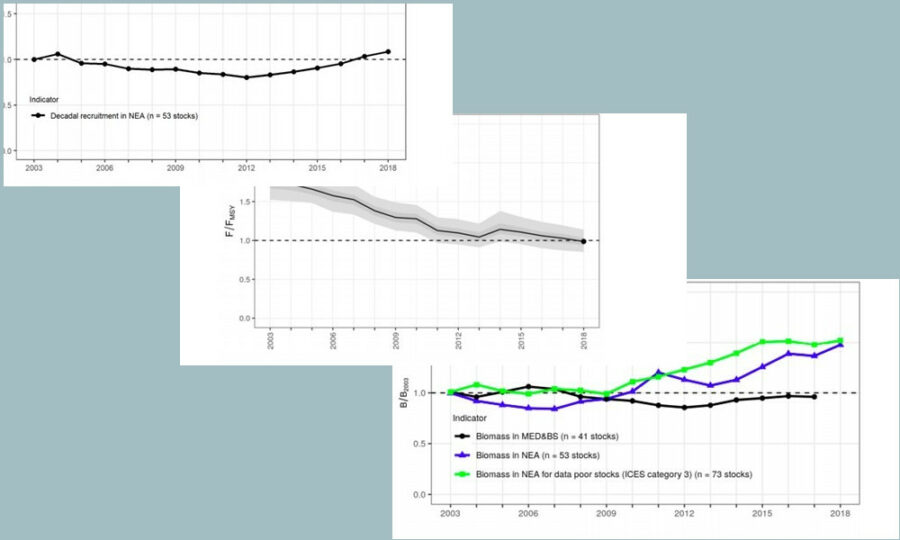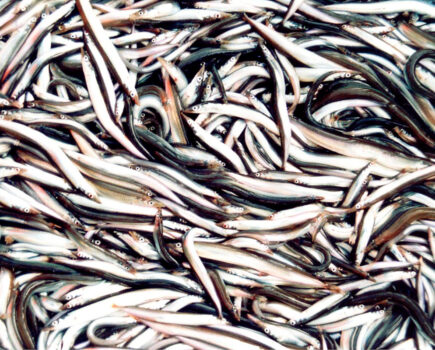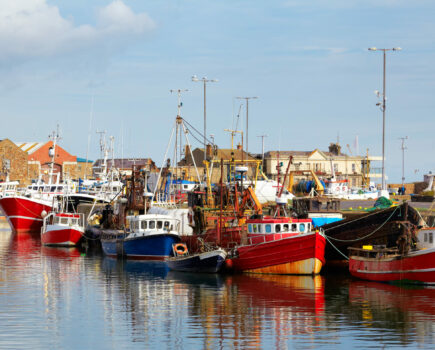Stocks and recruitment rise as effort falls
All indicators show NE Atlantic stocks in good health
Most fish stocks in the North East Atlantic are healthy and increasing, according to a new report from the EU Commission, reports Tim Oliver.
It shows that fishing pressure has been reduced by almost half in the period 2003-2018 for the stocks assessed and is at an all-time low, and that most stocks are at MSY level. Fish populations have been increasing significantly, reaching levels in 2018 that are 50% higher than in 2010.
The annual report on the performance of the CFP is from the EU Commission’s Scientific, Technical and Economic Committee for Fisheries (STECF), which provides independent scientific advice to the Commission.

Figure 1: Trends in the indicators of stock biomass (median values of the model-based estimates relative to 2003). Three indicators are presented: one for the North East Atlantic (53 stocks considered, blue line); one for the Mediterranean and Black Sea (41 stocks, black line); and one for data-limited stocks (ICES category 3, 73 stocks, green line).
It shows overall positive trends for many stocks in the North East Atlantic, where the proportion of overexploited stocks was reduced almost by half compared with 2007 figures. The proportion of stocks outside safe biological limits shows a similar downward trend over the same period.
Another healthy indication is that recruitment figures show that the number of young fish entering the stocks has been consistently increasing since 2012.
Industry spokesmen welcomed the report, and said it raised the question of how environmental NGOs could continue to portray to the public a picture of declining stocks and overexploitation of fisheries, in the face of such evidence – at least for the North East Atlantic.

Figure 2: Trend in F/FMSY (based on 46 stocks). The figure shows the indicator values since 2016 close to 1, which means that over all stocks, on average, the exploitation levels are close to FMSY. The dark grey zone shows the 50% confidence interval; the light grey zone shows the 95% confidence interval.
NFFO chief executive Barrie Deas said: “The STECF report confirms the positive stock trends that began around 20 years ago. We’ve known from ICES that there has been a trend of reducing mortality and increasing stocks for the past two decades – the turning point was the year 2000. The question this raises is how long the NGOs’ narrative based on overexploitation and decline can be maintained, in the face of the evidence? It stands up in the Mediterranean, but certainly not in the North East Atlantic.”
Daniel Voces, managing director of EU fishermen’s organisation Europêche, said: “The news on sustainable fisheries is unequivocally good. The majority of fish stocks in the North East Atlantic are healthy and thriving. That’s thanks to many years of sacrifices being made by the EU fishing fleets, and intensive collaboration with scientists and public authorities to improve fishing practices and fisheries management. Overfishing in the EU is at an all-time low.”
Europêche said it regretted that radical environmental NGOs continue to launch ‘gloom and doom studies’ trying to prove how terrible things are in European waters, by analysing the number of fish stocks or tonnes overfished in the past.
“It really upsets the industry that some NGOs do not recognise the good progress made in the past 20 years,” said Daniel Voces.
“It frustrates the efforts of our companies that invest in sustainable practices and want to do things better. It generates an ambience of mistrust, jeopardising the collaboration of the industry with scientists, governments and NGOs.
“It also confuses consumers who, because of aggressive campaigns from these organisations, may think that the oceans and fish stocks are in a dire situation and that consuming fish would contribute to harm the environment, when it is totally the opposite.
“The reality is that in the last 10 to 20 years, no industry has made so many efforts and commitment towards sustainability as the European fishing industry.”
Europêche argues that part of the problem lies with the fact that the main EU fisheries law introduces targets and objectives which go against scientific advice and the fisheries reality. In this sense, even though scientists acknowledge that it is not possible to achieve MSY levels for all stocks at the same time, this is an actual objective of the CFP.
Daniel Voces concluded: “Incredible accomplishments to achieve sustainability in our waters have been made in a record time, to the point that almost 100% of the landings from EU-regulated stocks come from catches fished at the MSY levels.

Figure 3: Trend in decadal recruitment scaled to 2003 in the North East Atlantic (based on 53 stocks).
“However, the introduction of unachievable policy objectives in the CFP, reform after reform, unfairly gives the impression to citizens and consumers that the fishing industry is not sustainable. Policies need to be ambitious, but rational at the same time.”
Barrie Deas questioned how the dramatic fall in fishing effort and changes in fishing patterns in 2020 due to the Covid-19 virus would be reflected in the scientific advice for fishing opportunities in 2021.
“If 2020 is an atypical year in terms of fishing patterns and activity, how is that going to be taken into account in the science and the management measures for 2021?” he asked.
“I’m hopefully not jumping to conclusions, but it’s certainly not going to be normal. The concern would be that the scientific models work by looking backwards and projecting forwards, and I suppose this is where the difference lies between the scientific advice and well-informed management decisions. As we move towards the autumn negotiations, along with everything else that’s going on, it’s one of the things we’ll have to take into account.”
The graphs from the STECF report illustrate the increase of biomass (Figure 1), the significant reduction of fishing pressure (Figure 2) and recruitment (Figure 3) in the North East Atlantic.








